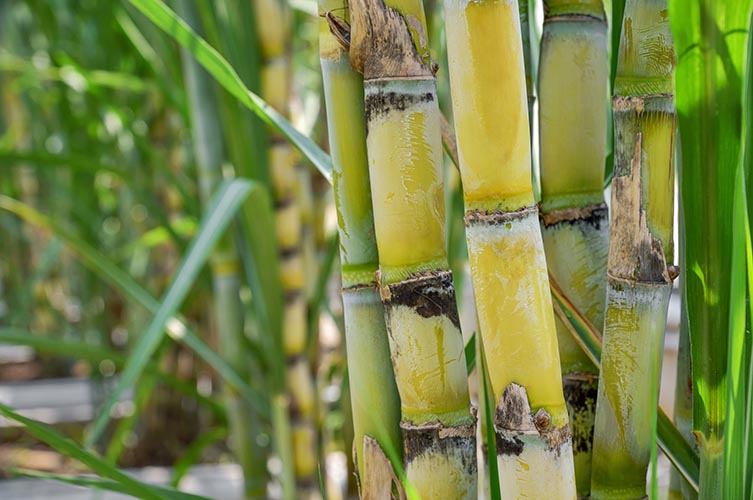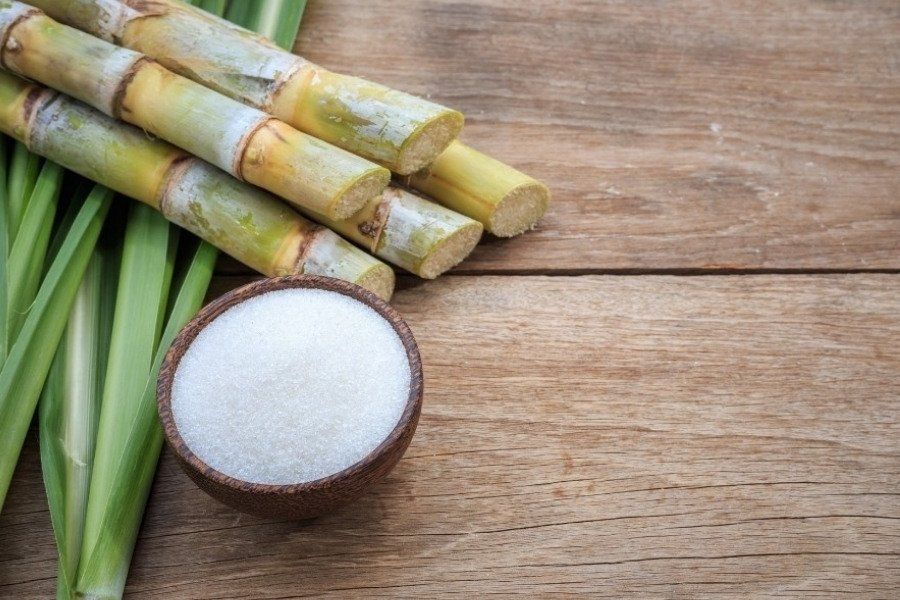Expert Insights on What Are Sugar Canes Used For in Energy and Fuel
Everything About Sugar Canes: What Are Sugar Canes Made Use Of For and Their Function in Worldwide Agriculture?
Sugar canes work as a keystone of international agriculture, mainly recognized for their duty in sugar manufacturing. They additionally contribute to the development of byproducts like molasses and ethanol. These facets not only sustain various markets but likewise effect economic security in rural regions. Nevertheless, the farming of sugar canes encounters substantial ecological obstacles. Comprehending their diverse function prompts further expedition into their agricultural methods and sustainability efforts.
The Agricultural Refine of Sugar Walking Stick Growing
Sugar walking stick growing might vary by region, the basic farming process continues to be consistent. The very first step entails picking high-yielding ranges suitable for local environments. Prep work of the dirt is crucial, usually calling for husbandry and the enhancement of plant foods to enhance fertility. Planting usually takes place throughout the stormy period, with farmers making use of either whole stalks or cuttings to develop new crops.As the plants grow, they require persistent care, consisting of weed control, insect management, and irrigation, depending upon the ecological conditions. Farmers check the sugar cane's growth cycle, which usually spans 10 to 24 months, prior to gathering. Collecting is labor-intensive, often carried out manually or with specialized equipment, guaranteeing very little damages to the stalks. Complying with harvest, the cane is delivered to refining facilities. This thorough farming procedure not only sustains regional economic situations yet additionally plays a substantial function in worldwide farming methods, adding to food and energy supplies.
Sugar Production: From Walking Stick to Crystal
The journey of sugar production starts the minute freshly gathered sugar walking cane shows up at processing facilities. The primary step includes cleaning and slicing the walking stick to prepare it for extraction. Utilizing high-pressure rollers, the juice is removed from the smashed walking stick, leading to a pleasant liquid referred to as sugarcane juice. This juice undergoes information, where contaminations are removed via the enhancement of lime and heat.Next, the clarified juice is focused by boiling it down to create a thick syrup. This syrup is then taken shape by cooling down, enabling sugar crystals to create. The taken shape sugar is divided from the continuing to be syrup, recognized as molasses, via centrifugation.Finally, the sugar crystals are washed and dried, resulting in the acquainted granulated sugar (What Are Sugar Canes Used For). This procedure transforms raw sugar walking cane into a product that is essential to numerous cooking and industrial applications, highlighting the importance of sugar in global agriculture
Biofuels and Sugar Canes: A Sustainable Future
As the globe increasingly looks for lasting power options, sugar canes have become a promising resource for biofuels. The biomass stemmed from sugar walking sticks can be transformed into ethanol, a renewable gas choice that substantially minimizes greenhouse gas emissions contrasted to nonrenewable fuel sources. This process not just gives a cleaner energy source but likewise promotes energy independence for many countries.In addition, sugar walking stick growing sustains rural economic situations by producing work in both farming and biofuel production fields. The use of sugar walking sticks for biofuel manufacturing also encourages farming diversification, which can enhance dirt health and wellness and decrease reliance on solitary plants. The by-products of sugar cane processing can be utilized for electrical energy generation, furthermore adding to a sustainable power cycle. As countries endeavor to fulfill renewable energy targets, sugar walking sticks are positioned to play a crucial role in forming an extra sustainable future in the biofuel landscape.

The Duty of Sugar Canes in Beverage Production
Sugar canes play a substantial role in drink manufacturing, acting as a main component in rum and adding to the sweet taste of several soft drinks. Additionally, their all-natural juices are utilized in various drinks, enhancing taste and allure. This versatility highlights the importance of sugar canes in the worldwide drink sector.
Sugar Walking Cane in Rum
Rum manufacturing is elaborately linked to the growing of sugar walking stick, a vital plant that supplies the necessary fermentable sugars needed for fermentation. This process begins with the removal of juice from harvested sugar walking sticks, which is then either fermented directly or processed into molasses. Yeast is contributed to transform the sugars into alcohol, causing a varied variety of rum designs, from light to dark varieties. The geographical region where the sugar cane is expanded considerably affects the taste profile of the rum, with elements such as dirt type and environment playing crucial duties. Nations like Barbados, Jamaica, and Cuba are renowned for their rum manufacturing, reflecting the social and historical value of sugar walking cane within the global beverage industry.
Soft Drinks Sweetener Resource

Natural Juice Manufacturing Utilizes
Along with its substantial role in soda production, sugar walking stick is likewise critical in the all-natural juice sector. The juice drawn out from sugar cane, referred to as walking stick juice, is commemorated for its natural sweetness and special taste profile. This juice is typically consumed fresh in different areas, specifically in tropical nations, where it is enjoyed as a revitalizing drink. In addition, cane juice offers as a base component in a series of all-natural fruit juices and healthy smoothies, enhancing both preference and nutritional value. Its all-natural residential or commercial properties make it an eye-catching alternative to sweetening agents, interesting health-conscious consumers. Overall, sugar walking cane's convenience in juice production underscores its value in modern-day drink offerings worldwide.
Technologies in Sugar Walking Cane Byproducts
Advancements in sugar walking stick by-products are paving the way for sustainable remedies in numerous sectors. Biofuels stemmed from sugar walking stick use a different power source, while developments in lasting product packaging are decreasing reliance on conventional materials. These growths highlight the adaptability and potential of sugar cane past its primary use in drink production.
Biofuels From Sugar Cane
How can the results of sugar walking cane contribute to sustainable power services? The conversion of sugar cane right into biofuels provides a promising opportunity for renewable resource. By utilizing the fibrous deposit, referred to as bagasse, producers can create bioethanol through fermentation processes. This bioethanol can serve as a lasting alternative to nonrenewable fuel sources, reducing greenhouse gas exhausts and dependence on non-renewable sources. In addition, molasses, one more result, can be fermented to generate biofuels, taking full advantage of resource effectiveness. The power produced from sugar walking stick not just provides a cleaner fuel source but also enhances the total economic feasibility of sugar production. By incorporating biofuel manufacturing into their procedures, sugar cane markets can play an important duty in advancing lasting power remedies internationally.
Sustainable Packaging Solutions
Sustainable packaging services are increasingly being established from sugar walking cane results, showcasing the flexibility of this farming staple. Advancements such as eco-friendly plastics stemmed from bagasse, the coarse deposit left after juice removal, are getting traction. These products use an environment-friendly option to conventional plastics, reducing dependence on fossil gas and lowering carbon footprints. In addition, sugar cane-based packaging is compostable, breaking down normally without harming the environment. Companies are now discovering these alternatives to align with customer demand for sustainability. As understanding of plastic contamination expands, the adoption of sugar cane-derived packaging is expected to climb, positioning sugar walking sticks as a principal in the shift to greener packaging services in numerous sectors.
Economic Influence of Sugar Cane Farming

Although sugar walking stick farming has deep origins in many economic situations, its economic effect extends much past farming production. This crop functions as a significant income for millions of farmers worldwide, especially in establishing countries where farming is a primary resources. Sugar walking cane adds to local economic climates with go to my site task production in harvesting, processing, and growing. The market also stimulates development in related fields such as transport, devices production, and food processing.Furthermore, sugar walking stick is a principal in worldwide trade, influencing worldwide markets and rates. Countries that generate sugar cane usually depend on exports to boost their financial stability. The byproducts of sugar cane, such as ethanol and molasses, diversify profits streams for farmers and include value to the agricultural industry. In general, the economic ramifications of sugar walking stick farming are extensive, influencing not just farmers yet also entire areas and nationwide economic situations.
Environmental Considerations in Sugar Walking Stick Growing
While sugar walking cane farming plays a crucial duty in numerous economic climates, it also elevates significant ecological issues that can not be neglected. The comprehensive use of plant foods and chemicals in sugar walking cane farming often leads to soil destruction and water contamination. Overflow from these chemicals can infect nearby water bodies, harming marine ecological communities. Furthermore, the monoculture methods common in sugar walking cane farming reduce biodiversity, making ecological communities much websites more prone to bugs and diseases.Deforestation is another crucial concern, as land is often gotten rid of to make way for sugar haciendas, resulting in environment loss for wild animals and enhanced carbon emissions. The high water intake needed for sugar walking stick irrigation can strain neighborhood water sources, especially in arid areas. As global demand for sugar proceeds to increase, resolving these environmental obstacles comes to be imperative to assure sustainable techniques in sugar cane farming.
Often Asked Concerns
What Are the Nutritional Conveniences of Sugar Cane?
The dietary benefits of sugar walking stick primarily include its high carb material, supplying energy. In addition, it consists of vitamins, minerals, and anti-oxidants that might support total health, though small amounts is essential because of its sugar material.
Just How Does Sugar Cane Affect Citizen Ecosystems?
Sugar walking cane growing can greatly affect regional ecological communities by modifying land use, influencing biodiversity, and calling for considerable water resources. Additionally, it might cause soil degradation and pesticide runoff, interrupting surrounding habitats and wild animals populaces.
What Is the Background of Sugar Walking Cane Growing?

Are There Alternatives to Sugar Walking Cane for Sugar Production?
Alternatives to sugar walking cane for sugar production consist of sugar beets, corn, and numerous exotic plants like sorghum and agave (What Are Sugar Canes Used For). These crops use diverse sources of sweet taste, each with unique cultivation needs and environmental impacts
How Do Weather Condition Patterns Influence Sugar Cane Yields?
Weather patterns significantly influence sugar walking stick returns through temperature level fluctuations, rainfall quantities, and seasonal cycles. Drought or excessive rainfall can prevent development, while excellent problems enhance photosynthesis, eventually impacting the amount and high quality of the harvest. The journey of sugar manufacturing begins the moment newly harvested sugar cane shows up at processing facilities. The crystallized sugar is separated from the remaining syrup, recognized as molasses, through centrifugation.Finally, the sugar crystals are cleaned and dried out, resulting in the familiar granulated sugar. Rum production is elaborately connected to the cultivation of sugar walking stick, a vital plant that supplies Click This Link the needed fermentable sugars needed for fermentation. Additionally, the monoculture practices common in sugar cane farming minimize biodiversity, making environments a lot more prone to bugs and diseases.Deforestation is an additional important issue, as land is commonly removed to make means for sugar plantations, leading to habitat loss for wild animals and raised carbon emissions. Alternatives to sugar cane for sugar production include sugar beetroots, corn, and numerous tropical plants like sorghum and agave.